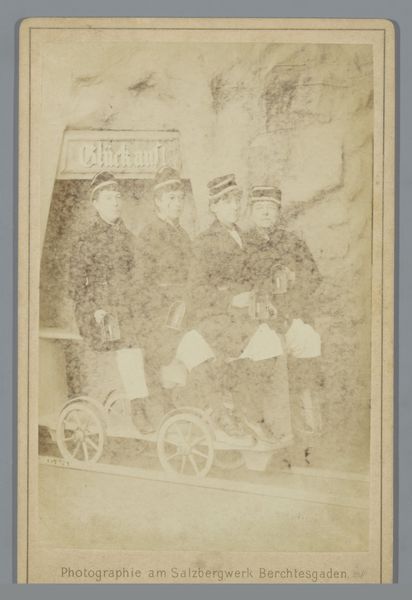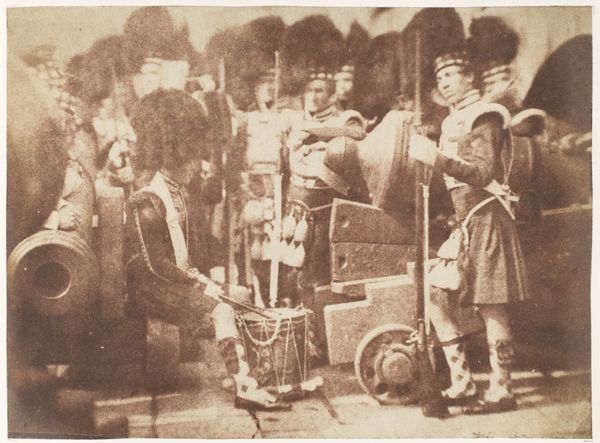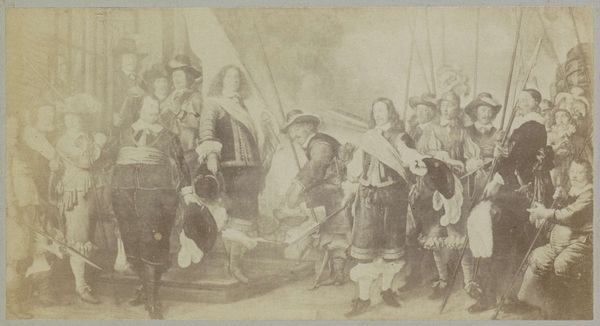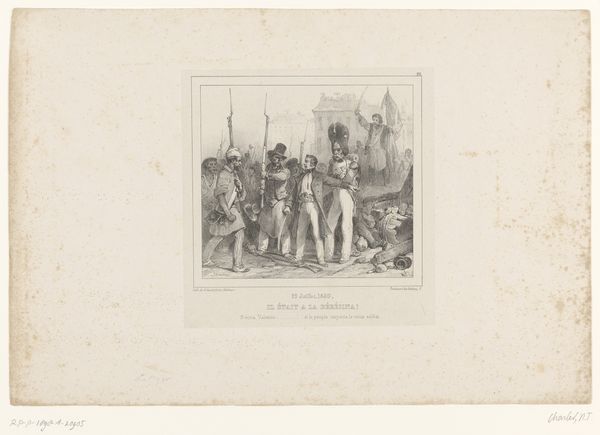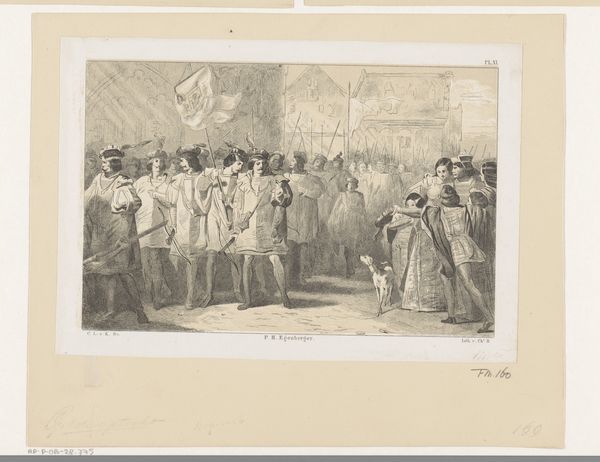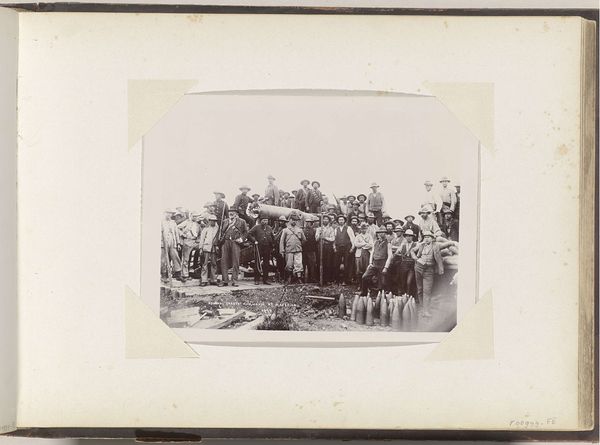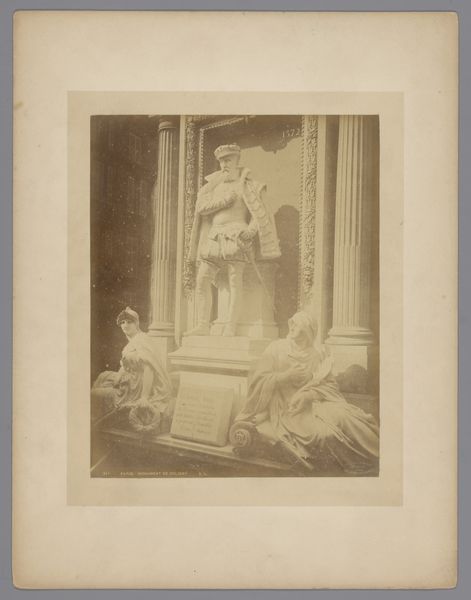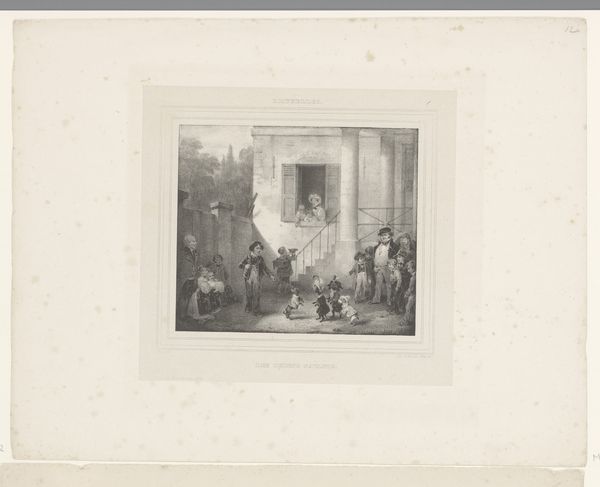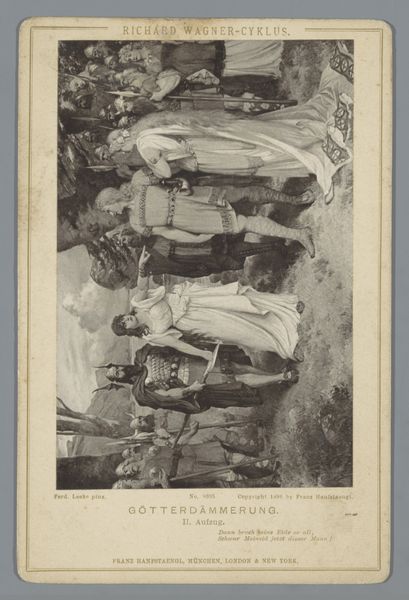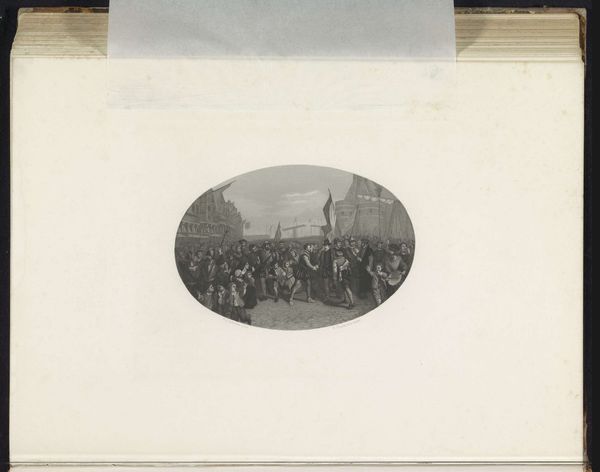
Keizer Wilhelm I bij de onthulling van het Niederwalddenkmal, 1883 Possibly 1883 - 1889
0:00
0:00
photography, gelatin-silver-print
#
portrait
#
photo of handprinted image
#
aged paper
#
toned paper
#
vintage
#
reduced colour palette
#
photo restoration
#
photography
#
historical fashion
#
unrealistic statue
#
gelatin-silver-print
#
history-painting
Dimensions: height 139 mm, width 94 mm, height 168 mm, width 108 mm
Copyright: Rijks Museum: Open Domain
Editor: This gelatin-silver print, possibly from 1883 to 1889, captures Kaiser Wilhelm I at the unveiling of the Niederwalddenkmal. The photo, by Ottomar Anschütz, has a sepia tone, giving it an aged and somewhat imposing quality. I'm curious, what stories do you think this image is trying to tell, and for whom? Curator: It’s interesting that you use the word ‘imposing’. It is an image deeply rooted in German nationalism and the construction of a unified German identity after the Franco-Prussian War. The Niederwalddenkmal itself was a symbol of this newly forged empire. How might this photographic rendering further solidify the power dynamics inherent in such a historical moment? Editor: Well, the framing does seem to emphasize Wilhelm I. The angle, looking slightly up at him, creates a sense of authority. The surrounding figures all appear in formal dress; what does the artist want us to think of them? Curator: Exactly. Consider who is absent, too. Working class people or those from marginalized communities, voices silenced in the dominant narrative of nation-building. What does it mean to have an image of power that intentionally excludes entire segments of the population? It invites us to examine not only what is celebrated, but at what cost. How does that resonate with our current discussions around monuments and public memory? Editor: That’s a really interesting point. I hadn’t considered the missing voices. Thinking about contemporary discussions, it makes me question the purpose and impact of such grand symbols of national identity. It highlights how these historical portrayals can be so one-sided and exclusionary. Curator: Precisely. This photo allows us to delve into the complexities of historical representation and challenge the dominant narratives it promotes. Examining visual culture offers crucial insights into the societal power structures and encourages more nuanced historical interpretations. Editor: I’m going to carry this context forward as I look at more photographs; thanks for offering these important points!
Comments
No comments
Be the first to comment and join the conversation on the ultimate creative platform.
